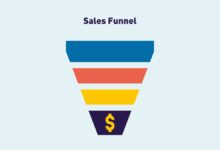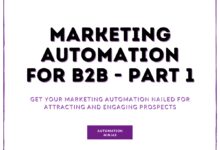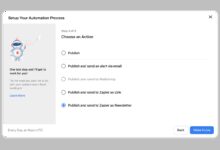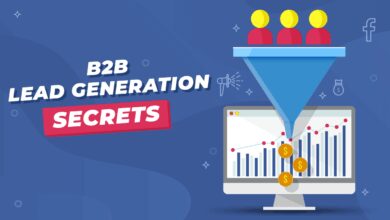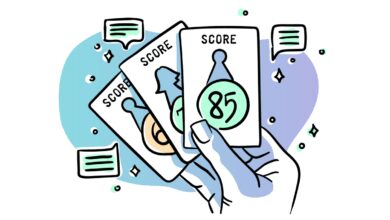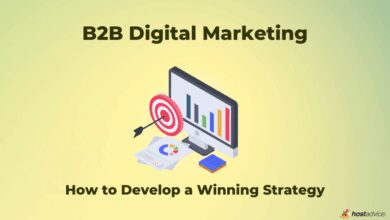B2B Lead Generation: 7 Proven Strategies to Skyrocket Growth
Generating high-quality leads in the B2B world isn’t just about luck—it’s about strategy, precision, and persistence. In this deep dive, we’ll explore the most effective b2b lead generation techniques that actually convert.
What Is B2B Lead Generation and Why It Matters

B2B lead generation is the process of identifying and attracting businesses that may be interested in your products or services. Unlike B2C, where decisions are often emotional and quick, B2B sales cycles are longer, more complex, and involve multiple stakeholders. That’s why a structured, data-driven approach to b2b lead generation is essential for sustainable growth.
The Core Difference Between B2B and B2C Lead Generation
B2B lead generation focuses on building relationships with other businesses, often involving longer sales funnels and higher transaction values. In contrast, B2C targets individual consumers with faster decision-making processes.
- B2B decisions are rational, data-backed, and committee-driven.
- B2C purchases are often impulsive and influenced by emotions.
- B2B lead generation requires nurturing over weeks or months.
“In B2B, you’re not just selling a product—you’re selling a solution to a business problem.” — HubSpot
Key Metrics That Define B2B Lead Success
Measuring the effectiveness of your b2b lead generation efforts requires tracking the right KPIs. These include:
- Lead Conversion Rate: The percentage of leads that turn into customers.
- Cost Per Lead (CPL): How much you spend to acquire each lead.
- Lead Quality Score: A rating based on how closely a lead matches your ideal customer profile.
- Sales Cycle Length: The average time it takes to convert a lead into a paying customer.
Tools like HubSpot and Salesforce help track these metrics in real time.
Top 7 B2B Lead Generation Strategies That Actually Work
Not all b2b lead generation tactics deliver equal results. The most successful companies combine proven methods with innovative tools. Below are seven strategies backed by data and real-world success.
1. Content Marketing with High-Intent Offers
Content is still king in b2b lead generation. But not just any content—high-value, educational content that addresses specific pain points.
- Create whitepapers, case studies, and industry reports that require an email to download.
- Use SEO-optimized blog posts to attract organic traffic from decision-makers.
- Develop gated content like webinars or toolkits to capture lead information.
According to Content Marketing Institute, 70% of B2B marketers use content marketing as their primary lead generation tool.
2. LinkedIn Lead Gen Forms and Targeted Outreach
LinkedIn remains the most powerful platform for b2b lead generation. With over 900 million users, it’s where executives, managers, and procurement officers spend their professional time.
- Use LinkedIn Lead Gen Forms to collect leads directly within the platform—no landing page needed.
- Run targeted Sponsored Content campaigns based on job title, industry, and company size.
- Combine automation tools like LinkedIn Sales Navigator with personalized InMail sequences.
“LinkedIn generates 80% of B2B leads online.” — LinkedIn Marketing Solutions
3. Account-Based Marketing (ABM) for Precision Targeting
ABM flips traditional b2b lead generation on its head. Instead of casting a wide net, you target specific high-value accounts with personalized campaigns.
- Identify 50–100 strategic accounts that align with your ideal customer profile.
- Create custom content, ads, and emails tailored to each account’s needs.
- Engage multiple stakeholders within the same organization simultaneously.
Research from ABM Institute shows that companies using ABM report 208% higher ROI than those using traditional methods.
Optimizing Your Website for B2B Lead Capture
Your website is your digital storefront—and in b2b lead generation, it needs to be engineered for conversion. A beautiful design isn’t enough; it must guide visitors toward becoming leads.
Strategic Placement of CTAs and Lead Magnets
Call-to-action buttons (CTAs) should be visible, compelling, and contextually relevant.
- Use action-oriented language like “Download the Guide” or “Book Your Demo.”
- Place CTAs above the fold and after high-engagement content.
- Offer lead magnets such as free trials, consultations, or ROI calculators.
Tools like Optimizely allow A/B testing of CTA placement and copy to maximize conversions.
Conversion Rate Optimization (CRO) Techniques
CRO is the science of turning more website visitors into leads without increasing traffic.
- Reduce form fields to only essential information (name, email, company).
- Use exit-intent popups with a compelling offer.
- Implement live chat to answer questions in real time.
According to Crazy Egg, reducing form fields from 11 to 4 can increase conversions by up to 120%.
Leveraging Email Marketing for B2B Lead Nurturing
Email remains one of the highest ROI channels in b2b lead generation. But success depends on segmentation, personalization, and timing.
Building a High-Quality Email List
Never buy email lists. Instead, grow an organic list through:
- Content upgrades (e.g., “Get the checklist version of this guide”).
- Webinar registrations.
- Free tool sign-ups.
Use double opt-in to ensure list quality and compliance with GDPR and CAN-SPAM.
Drip Campaigns That Convert
Drip campaigns automate the nurturing process, delivering the right message at the right time.
- Day 1: Welcome email with a thank-you and resource link.
- Day 3: Case study showing how a similar company solved their problem.
- Day 7: Invitation to a personalized demo or consultation.
Marketo reports that drip emails generate 18x more revenue than broadcast emails.
The Role of SEO in B2B Lead Generation
Search engine optimization (SEO) is a long-term but highly effective b2b lead generation strategy. When done right, it brings in high-intent traffic actively searching for solutions.
Keyword Research for B2B Buyers
B2B buyers use specific, long-tail keywords when researching solutions.
- Target phrases like “best CRM for mid-sized manufacturing companies” instead of “CRM software.”
- Use tools like SEMrush or Ahrefs to identify low-competition, high-intent keywords.
- Optimize for voice search with natural language queries.
Technical SEO for Lead-Friendly Websites
Even the best content won’t convert if your site has technical issues.
- Ensure fast page load speeds (under 2 seconds).
- Fix broken links and 404 errors.
- Use schema markup to enhance search visibility.
Google’s Core Web Vitals now directly impact rankings, making technical SEO a non-negotiable part of b2b lead generation.
Using Paid Advertising for Scalable B2B Lead Generation
While organic strategies take time, paid advertising delivers immediate results when executed correctly.
Google Ads for High-Intent B2B Keywords
Google Search Ads target users actively searching for solutions.
- Bid on commercial intent keywords like “buy project management software” or “enterprise cybersecurity solutions.”
- Use negative keywords to filter out irrelevant traffic.
- Implement conversion tracking to measure ROI accurately.
According to WordStream, the average conversion rate for B2B Google Ads is 5.71%.
Retargeting to Re-Engage Cold Leads
Most B2B buyers don’t convert on their first visit. Retargeting keeps your brand top-of-mind.
- Use pixel-based retargeting on Facebook, LinkedIn, and Google Display Network.
- Segment audiences based on behavior (e.g., visited pricing page but didn’t convert).
- Deliver personalized ads with dynamic content.
“Retargeting increases conversion rates by up to 150%.” — Criteo
Measuring and Optimizing Your B2B Lead Generation Funnel
Without measurement, you’re flying blind. The best b2b lead generation strategies are continuously tested and refined.
Mapping the B2B Buyer’s Journey
Understand the stages your leads go through:
- Awareness: They recognize a problem.
- Consideration: They research solutions.
- Decision: They choose a vendor.
Create content and campaigns tailored to each stage to guide them forward.
Marketing Automation and CRM Integration
Tools like Marketo, HubSpot, and Salesforce automate lead scoring, nurturing, and handoff to sales.
- Set up lead scoring based on engagement (email opens, page visits, content downloads).
- Trigger automated workflows when leads reach a certain score.
- Sync data between marketing and sales teams to reduce friction.
Companies using marketing automation see a 451% increase in qualified leads, per Marketing Charts.
Emerging Trends in B2B Lead Generation for 2025
The landscape of b2b lead generation is evolving fast. Staying ahead means embracing innovation.
AI-Powered Lead Scoring and Chatbots
Artificial intelligence is transforming how we identify and engage leads.
- AI analyzes behavior patterns to predict which leads are most likely to convert.
- Chatbots provide instant responses, qualify leads 24/7, and book meetings.
- Tools like Drift and Intercom integrate AI into conversational marketing.
Video Marketing and Personalization at Scale
Video is becoming a dominant force in b2b lead generation.
- Send personalized video messages using tools like Vidyard or Haptik.
- Create explainer videos, product demos, and customer testimonials.
- Embed videos in emails and landing pages to boost engagement.
Wyzowl reports that 91% of businesses use video as a marketing tool, and 87% say it’s effective for lead generation.
What is the most effective b2b lead generation channel?
The most effective channel depends on your audience, but LinkedIn and content marketing consistently rank highest for B2B companies. Combining both with email nurturing and SEO delivers the best long-term results.
How long does it take to see results from b2b lead generation?
Organic strategies like SEO and content marketing can take 6–12 months to gain traction. Paid advertising and LinkedIn outreach can generate leads within weeks. Consistency and optimization are key to sustained success.
What is lead scoring and why is it important?
Lead scoring assigns points to leads based on their behavior and profile. It helps prioritize high-intent prospects, improves sales efficiency, and increases conversion rates.
Should I outsource my b2b lead generation?
Outsourcing can be effective if you partner with a reputable agency that understands your industry. However, maintaining internal oversight ensures alignment with your brand and goals.
How do I measure the ROI of my b2b lead generation efforts?
Calculate ROI by subtracting the cost of your campaigns from the revenue generated, then divide by the cost. Use CRM and analytics tools to track lead-to-customer conversion rates and customer lifetime value (CLV).
B2B lead generation is not a one-size-fits-all game. It requires a blend of strategy, technology, and persistence. By focusing on high-intent content, leveraging platforms like LinkedIn, optimizing your website, and using data to refine your approach, you can build a predictable pipeline of qualified leads. The future belongs to those who combine proven tactics with emerging technologies like AI and video. Start small, test often, and scale what works.
Further Reading:

